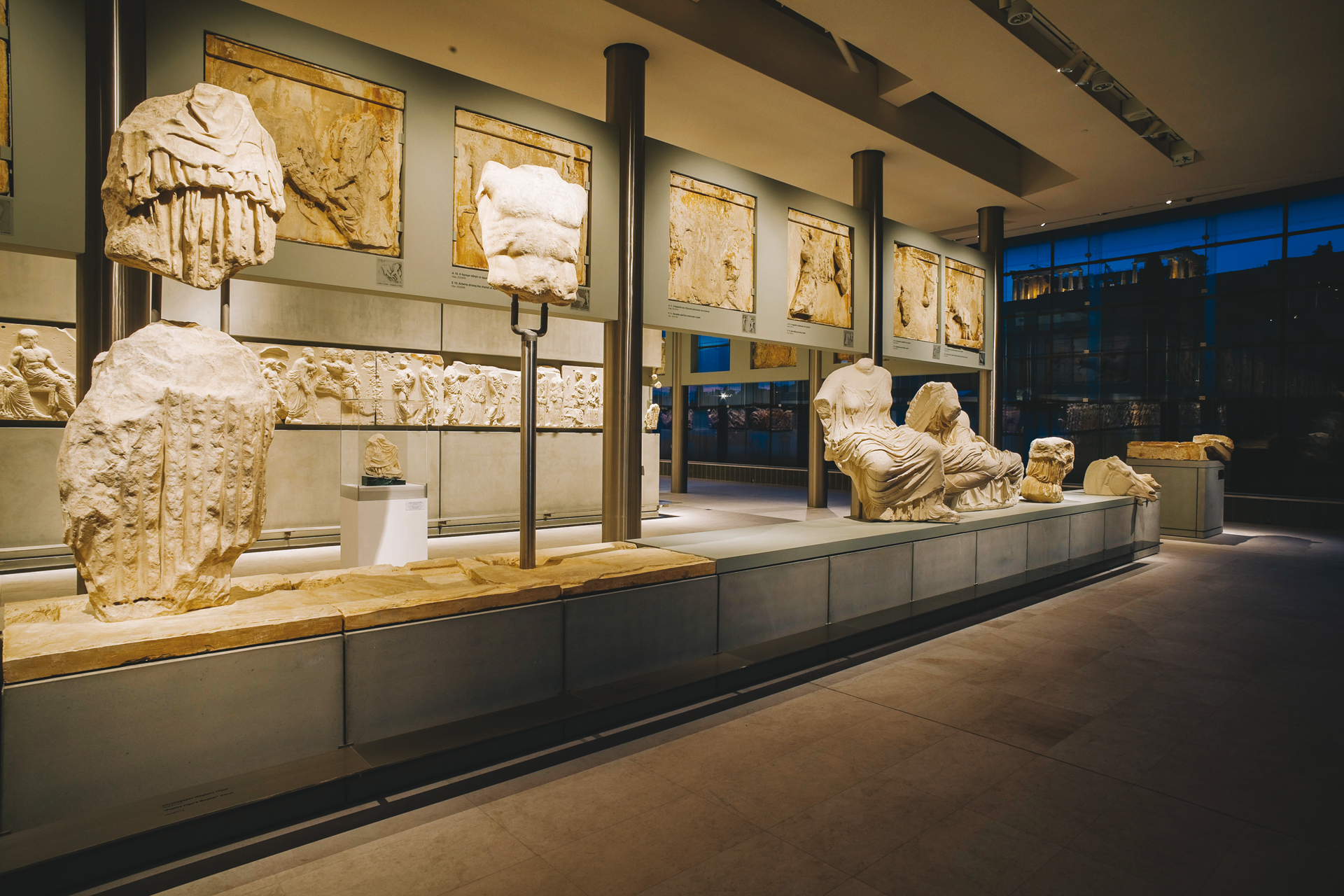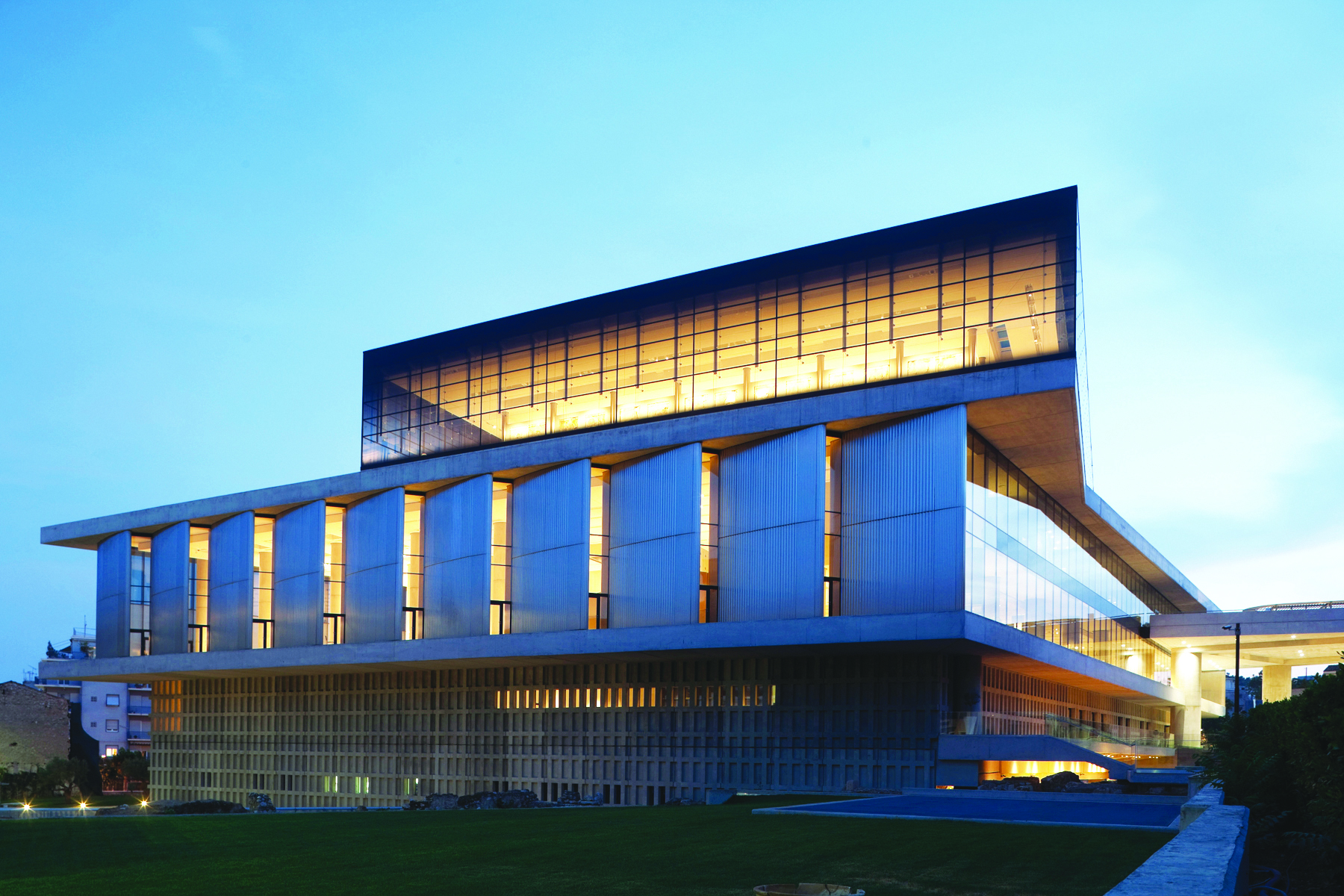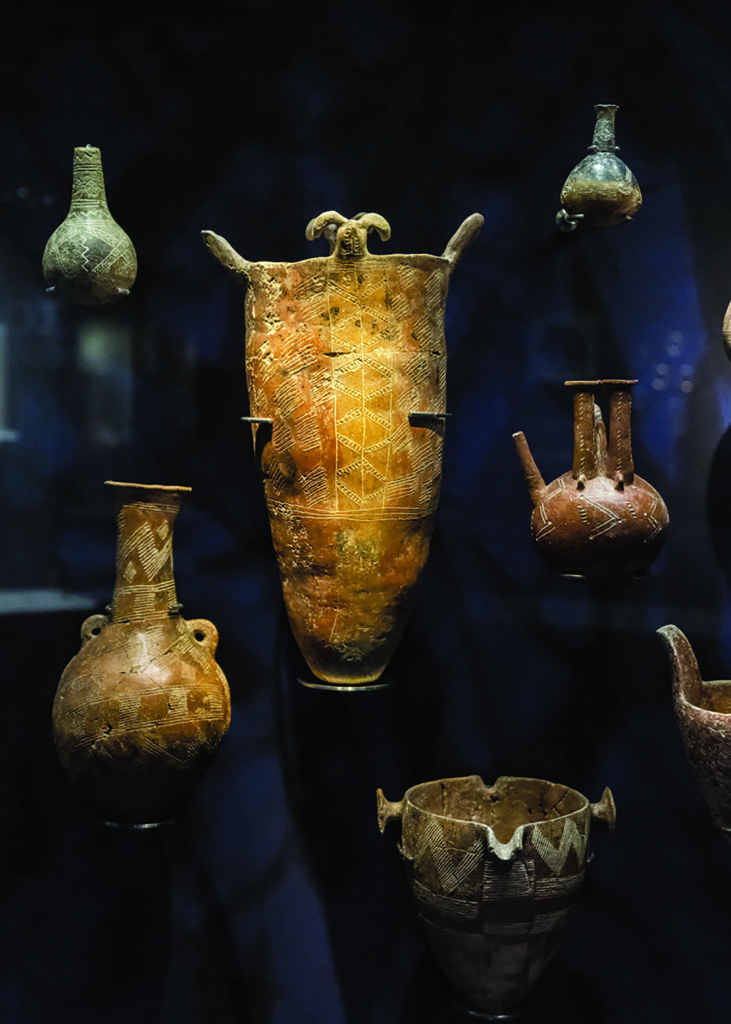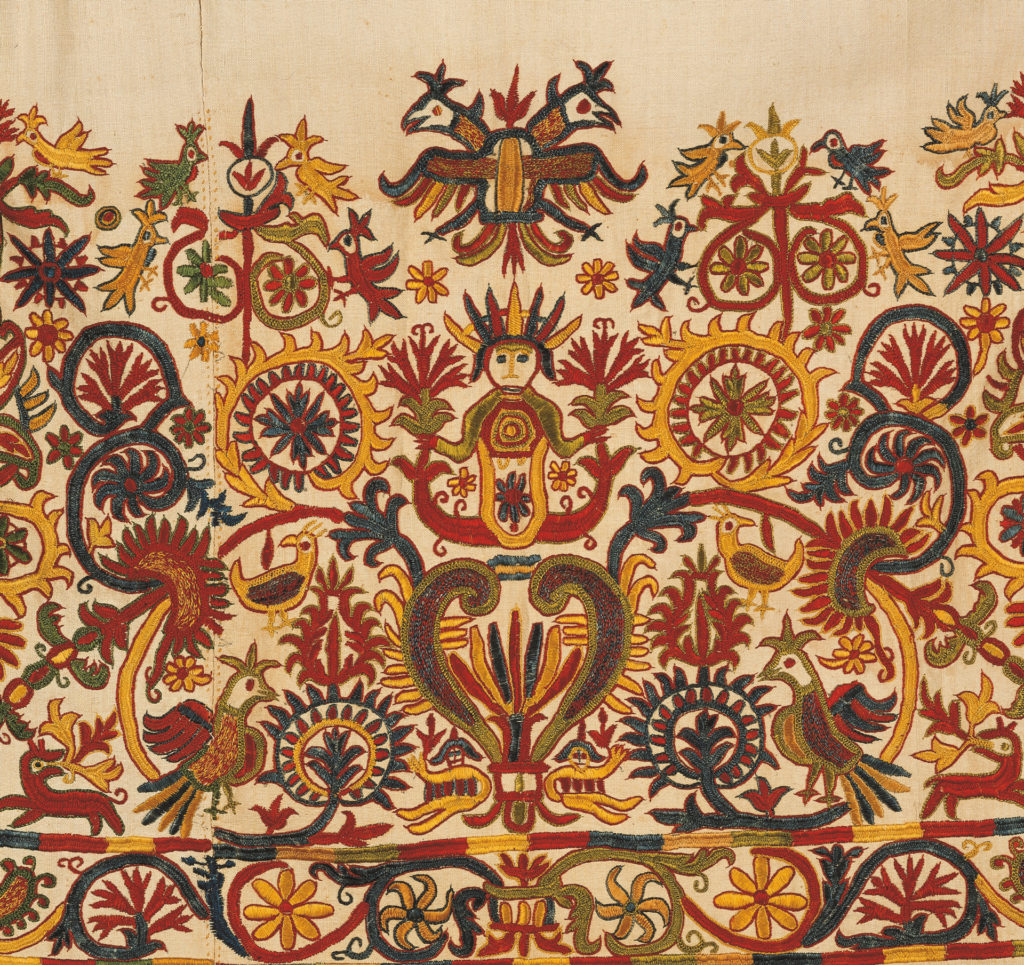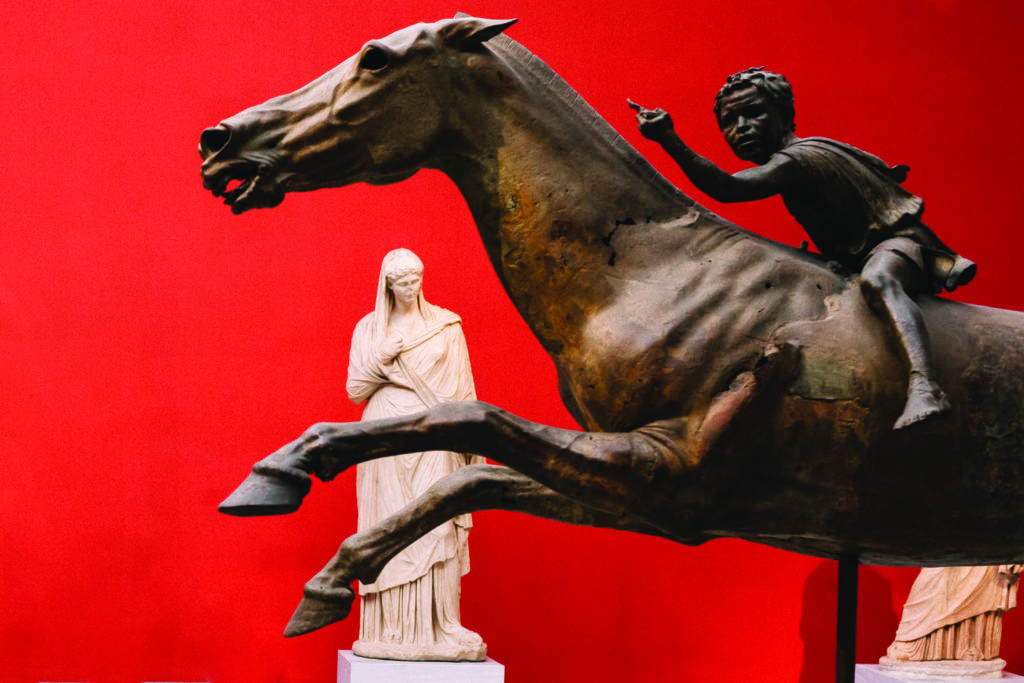it was created with the ambition to be ranked among the best museums in the world. It took about 40 years of planning before it was finally materialized. Its construction plans were canceled, then others were made, right from the start every once in a while. Of course, it would be unfair not to emphasize that a serious reason for the delays was the excavations on the plot on which the museum was finally erected, which lasted about 13 years. They are considered the most extensive and efficient ever made in the center of Athens. These excavations also led to the choice of glass floors in various parts of what is considered to be the ground floor, in order to make their imprint visible and to symbolically confirm the continuity of construction and habitation of the Acropolis area from ancient times until today.
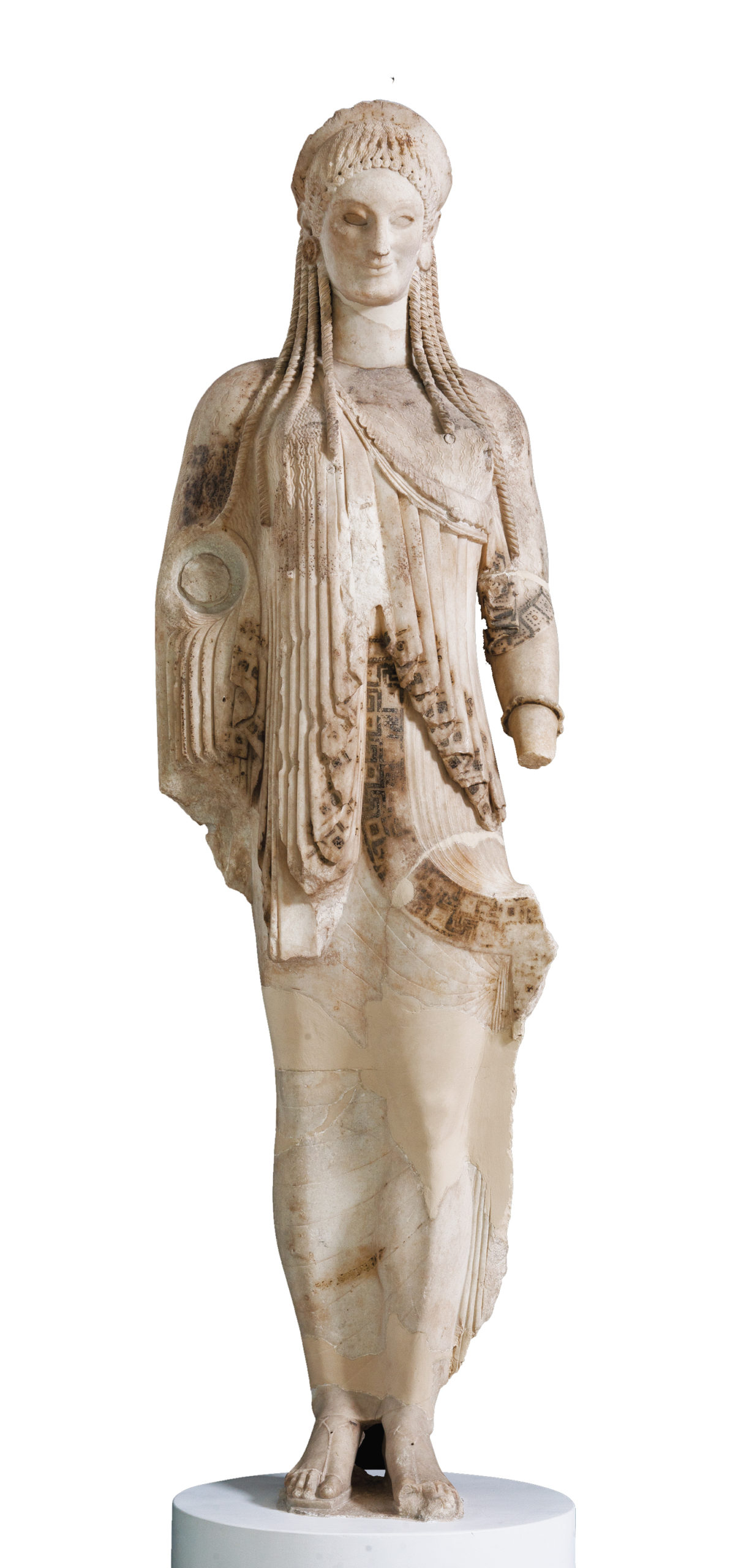
One of the largest and best preserved Korai, with sophisticated hairstyle and elaborately folded attire. Around 520 BC (Acr. 682) © Acropolis Museum. Photo: Socratis Mavrommatis
The new Acropolis Museum is a creation of the Swiss-American architect Bernard Tschumi. This is not a building that could easily be associated with a well-known architectural style. One would rather characterize it as completely “idiosyncratic” or rather, one could say that its architecture was determined by a very basic and essential pursuit: that the Parthenon marbles it will host, if they are ever to return home, face the sun and are bathed in its light, exactly the way it would be if they were in their original location, on the temple. For this reason, the top floor, which is surrounded by glass, turns and deviates from the main axis of the building in order to obtain a complete parallel with the ancient temple at the top of the Acropolis rock. Indeed visitors can see up close the frieze and the fronts or at least the pieces of these parts of the ancient temple that remained in Greece along with plaster replicas of those in the British Museum and elsewhere. This way they see this breathtaking sculptural complex in the exact same natural shadows that would exist if its parts had never been removed from their place on the ancient monument.
However, there are also inventive architectural solutions in the rest of the museum that serve important museological functions. For example, the floor acquires an upward slope as a reference to the slopes of the sacred rock and the ritual process of ascent to the Parthenon that was followed in ancient times by the Athenians.
Also extremely interesting is the idea of a “forest of votive offerings”, which consists of statues that the faithful offered to the goddess as a sign of gratitude because she listened and fulfilled some of their wishes. These were excavated at the site of the Acropolis and are presented in an irregular manner, just as one would see them in their time, placed almost randomly on the sacred rock.
Furthermore, the Caryatids are the superstars of the museum. They are standing in a prominent position where visitors can see them up close and effortlessly express their admiration.
Acropolis Museum
15 Dionysiou Areopagitou Str.,
Athens 11742 /
Tel.: +30 210 9000 900
e-mail: info@theacropolismuseum.gr
www.theacropolismuseum.gr/en
Opening Hours: Until October 31: Monday: 8:00-16:00, Tuesday, Wednesday, Thursday, Saturday, Sunday: 8:00-20:00, Friday: 8:00-22:00 (last entrance 30 minutes before closing time) / Annual Holidays: January 1st, May 1, Easter Sunday & Monday, December 25 & 26 /
Tickets: Full price: €5. Reduced price: €3 / Free admission: May 18 – International Museum Day, March 25, October 28 / Infrastructure for persons with disabilities.

